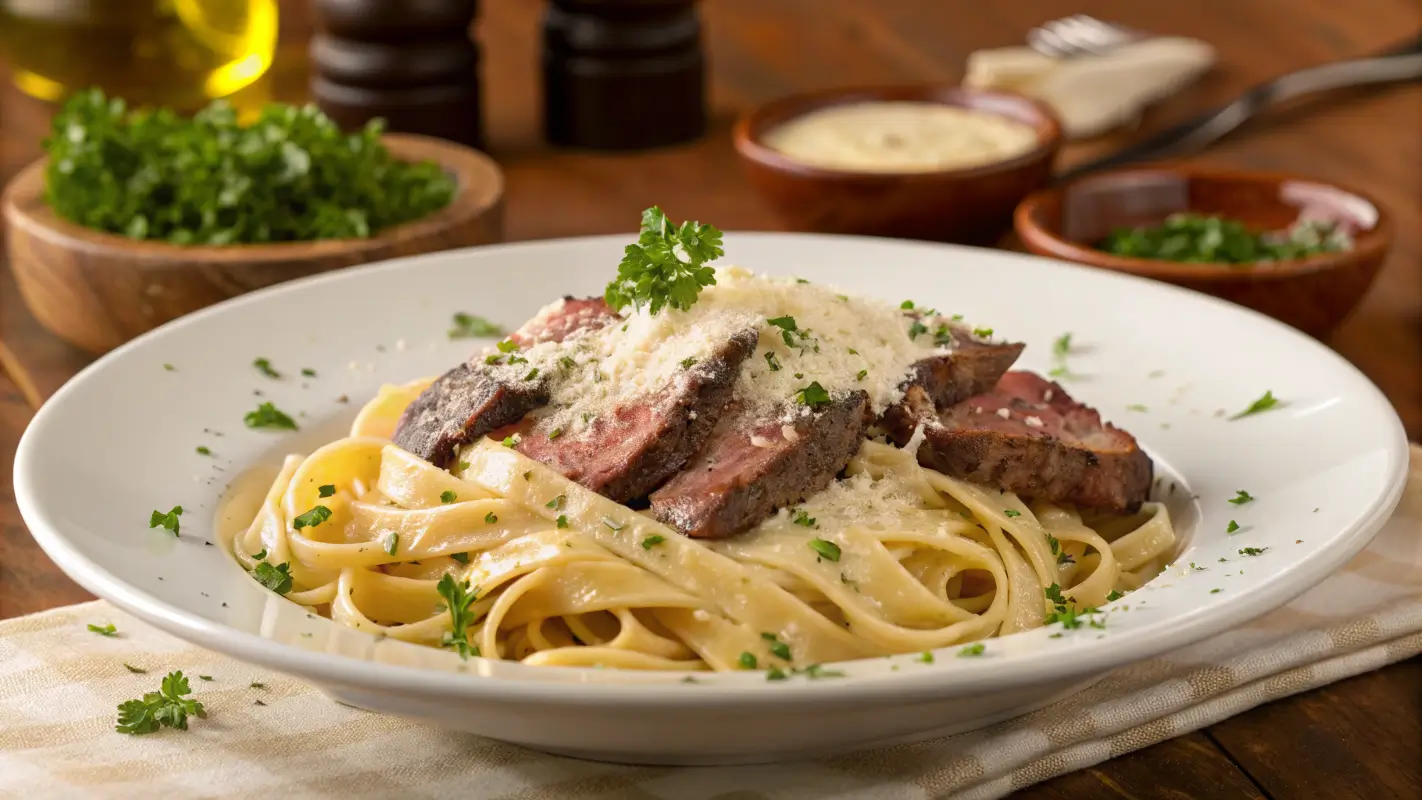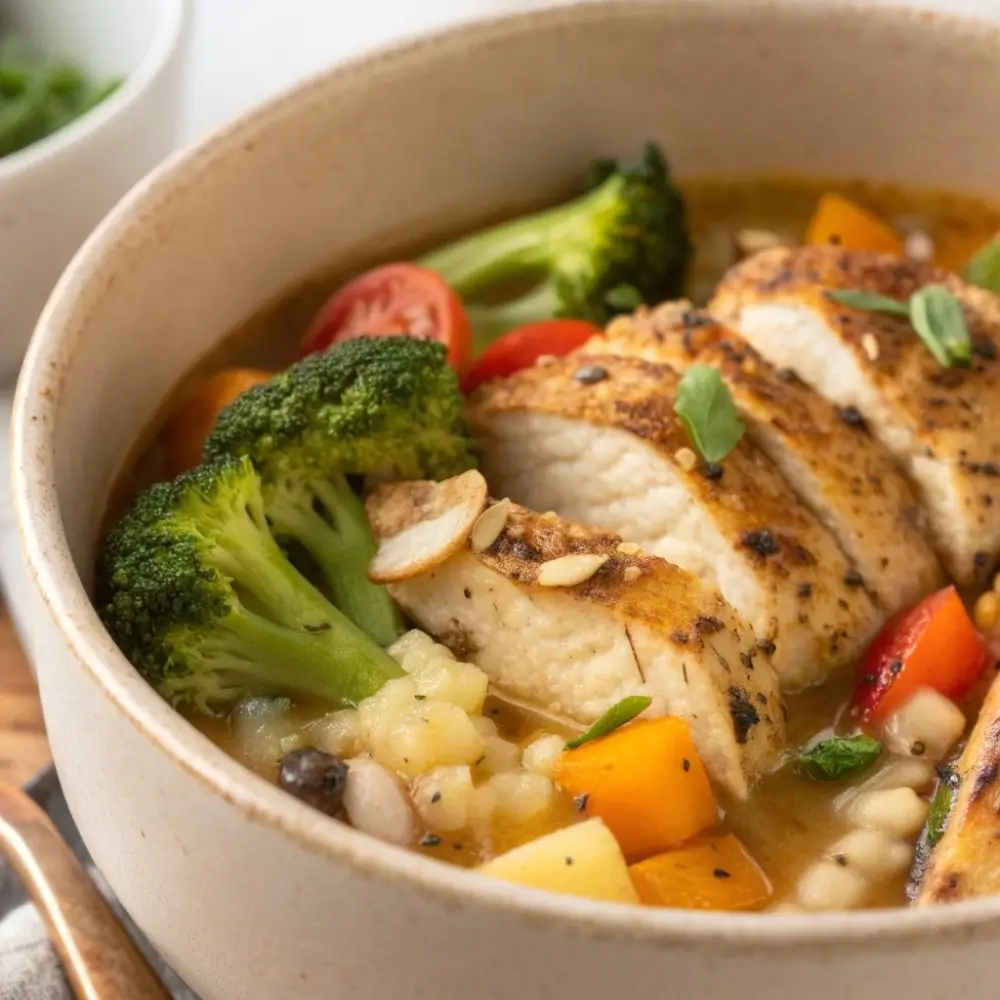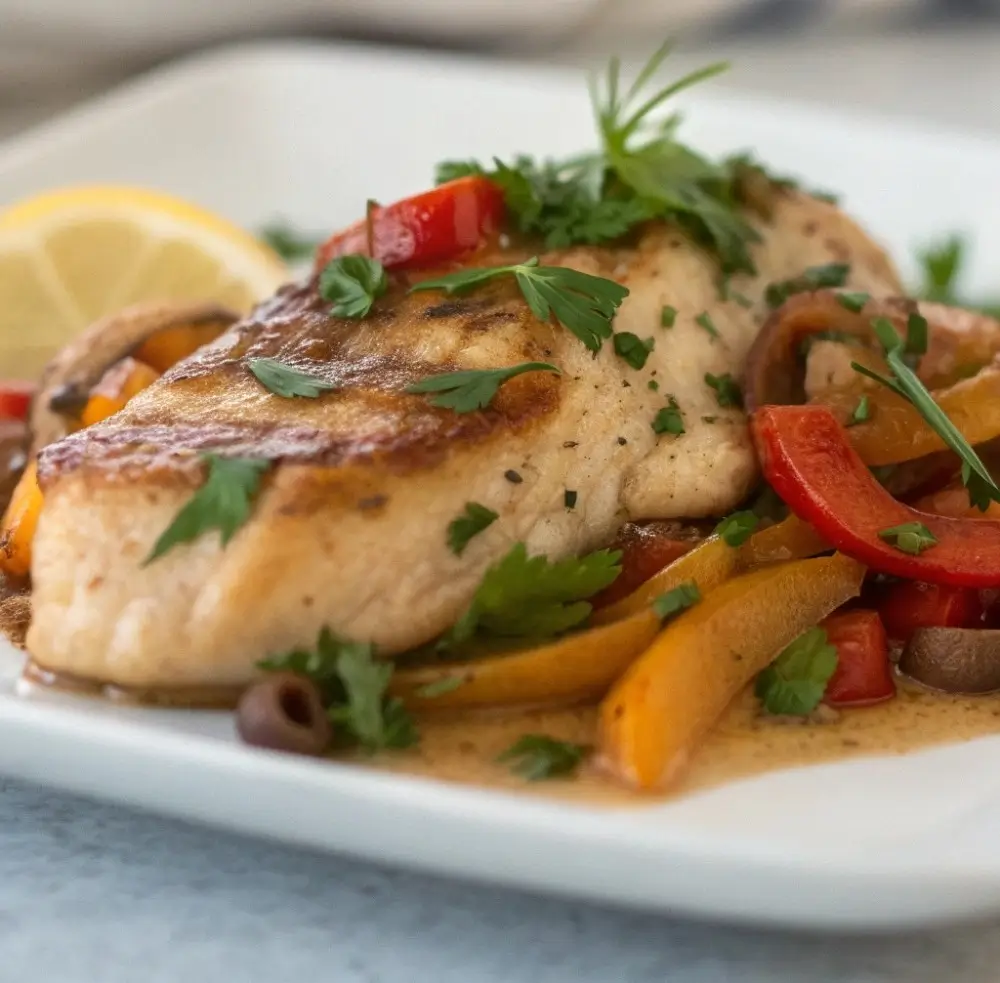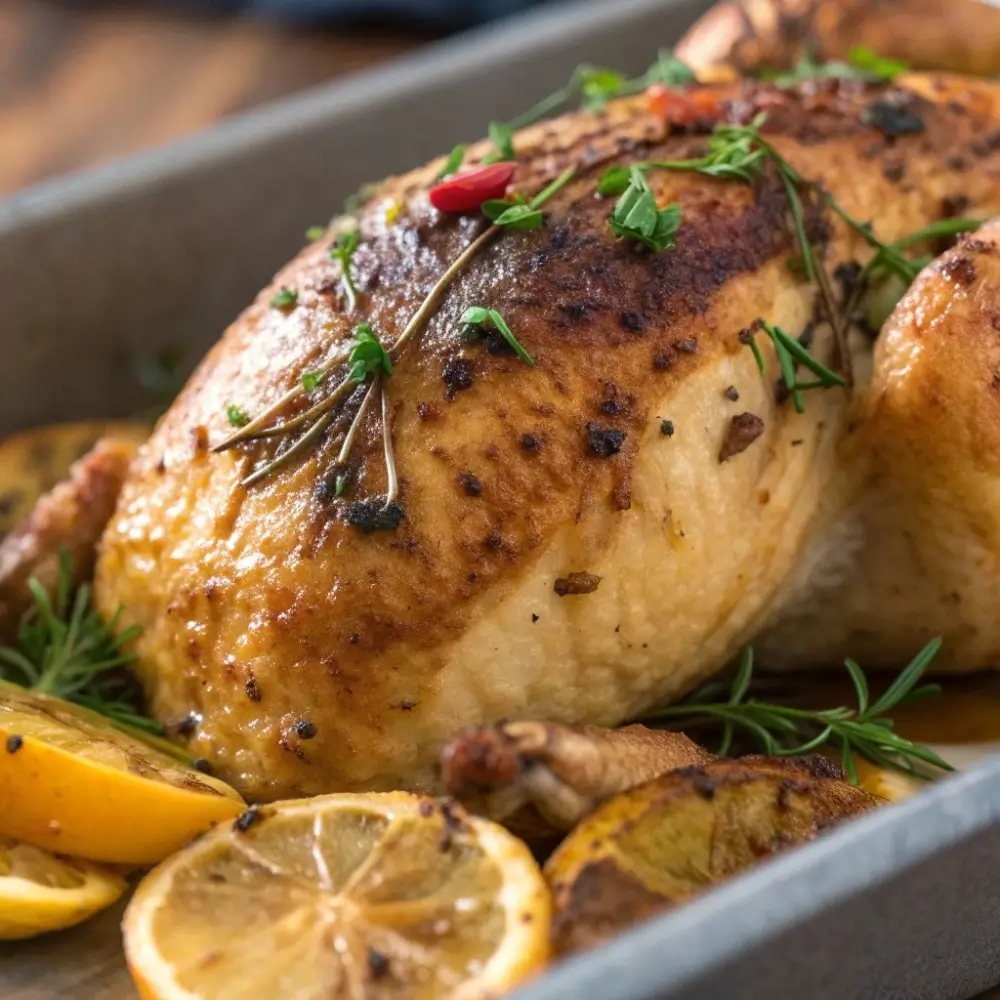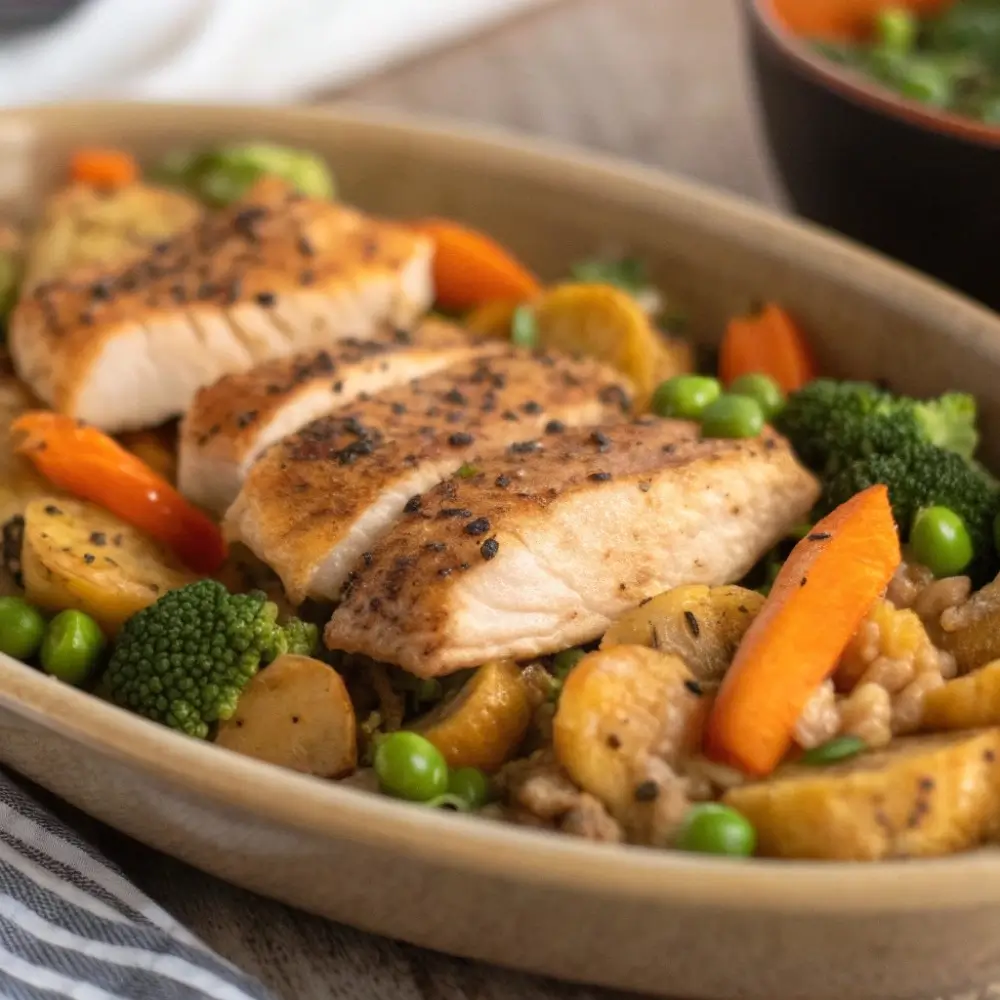Table of Contents
If you’re craving a comforting yet sophisticated dish, then steak pasta might just be the answer to your culinary dreams. Combining the rich, savory flavor of tender steak with the delightful textures of pasta creates a meal that’s both satisfying and versatile. Whether you’re in the mood for something creamy, spicy, or light, steak pasta recipes offer endless possibilities to suit your taste buds.
In this article, we’ll explore a variety of steak pasta dishes, from easy and quick recipes to more intricate, flavor-packed meals. You’ll learn how to perfectly sear your steak, select the right pasta, and prepare mouthwatering sauces that complement both. Plus, we’ll dive into creative variations and helpful tips to ensure your dish turns out just right. Ready to take your steak and pasta game to the next level? Let’s begin!
Understanding Steak Pasta
What is Steak Pasta?
Steak pasta is exactly what it sounds like: a dish that combines juicy steak with pasta. This versatile meal can take on many forms—whether served with a rich creamy sauce, a zesty tomato base, or simply a drizzle of olive oil and fresh herbs. The beauty of steak pasta lies in its ability to blend bold, meaty flavors with the comforting goodness of pasta, creating a satisfying and indulgent experience.
In most cases, steak pasta is served with thinly sliced pieces of steak, which are either grilled, pan-seared, or even cooked sous vide, ensuring tenderness and juiciness. The steak is typically paired with a flavorful sauce, like garlic butter, Alfredo, or a savory tomato-based sauce, which enhances both the meat and the pasta.
Why Steak Works Well in Pasta Dishes
The richness of steak naturally complements pasta, as the meat’s deep flavors contrast wonderfully with the simple, starchy texture of the noodles. But it’s not just about flavor—steak also offers protein and a satisfying chew that balances the softness of the pasta. Whether you prefer a thick and hearty dish or something lighter, steak can be integrated into almost any type of pasta recipe. And when paired with the right sauce, it becomes a perfect combination of flavors.
The Right Cuts of Steak for Pasta
When it comes to choosing the right cut of steak for pasta, the best options are those that are tender yet can stand up to the richness of a sauce. Ribeye, flank, and sirloin steaks are great choices. These cuts are flavorful and have a good balance of fat and tenderness that works perfectly in a pasta dish. For a leaner option, you can try using tenderloin or skirt steak, which also work well in pasta dishes but may require careful cooking to avoid overcooking.
Essential Ingredients for Steak Pasta
Steak Selection: The Heart of the Dish
The steak is the star of the show, so selecting the right cut is essential to a delicious steak pasta recipe. Depending on your preference for tenderness or flavor, you’ll want to go for cuts like ribeye, sirloin, or flank steak. Ribeye is known for its marbling and juiciness, while flank steak offers a leaner texture with a bit of chew. Sirloin provides a good balance of flavor and tenderness, making it ideal for a pasta dish. If you’re aiming for a leaner meal, tenderloin is another great option.
Choosing the Perfect Pasta
When it comes to pasta, there’s no shortage of options to pair with steak. For rich sauces, you might want to go with thicker pasta like fettuccine, pappardelle, or rigatoni, which can hold onto the sauce and steak juices better. On the other hand, lighter dishes with a simple sauce can work well with linguine, spaghetti, or penne. The key is to match the texture of the pasta with the sauce, ensuring that each bite is a perfect balance of steak and pasta.
Sauces: The Magic Behind Steak Pasta
The sauce is where creativity can really shine. Cream-based sauces like Alfredo or garlic butter work beautifully with steak, providing a rich contrast to the hearty meat. Alternatively, tomato-based sauces like marinara or a spicy arrabbiata can complement the steak’s bold flavors with tanginess and acidity. You can also go for a balsamic glaze or a fresh pesto to add another layer of depth to your dish. The beauty of steak pasta is that it can be tailored to fit your personal taste.
Preparation Techniques for Perfect Steak Pasta
Step 1: Preparing the Steak
The key to creating a memorable steak pasta recipe is the way you prepare your steak. Here’s how to achieve the perfect steak every time.
-
Choose Your Cut
As mentioned earlier, the best steak cuts for pasta include ribeye, flank, or sirloin. Depending on your preference, ribeye offers a rich flavor due to its marbling, while flank steak has a leaner texture. Sirloin provides the ideal balance of tenderness and flavor. -
Seasoning
Before you start cooking, season your steak generously. Salt and pepper are the essentials, but don’t hesitate to add garlic powder, onion powder, or even a pinch of paprika for extra flavor. You can also marinate the steak for 30 minutes to a few hours to tenderize it and enhance the flavor. A simple marinade of olive oil, soy sauce, garlic, and herbs like rosemary or thyme will work wonders. -
Searing the Steak
Heat a cast-iron skillet or a heavy-bottomed pan over medium-high heat. Once the pan is hot, add a tablespoon of oil and place your steak in the pan. Let it sear for 3-5 minutes per side (depending on the thickness of the steak and your desired level of doneness). For a perfect medium-rare steak, aim for an internal temperature of 130-135°F (54-57°C). -
Resting the Steak
After searing the steak, remove it from the heat and let it rest on a cutting board for at least 5-10 minutes. Resting allows the juices to redistribute, ensuring that your steak is tender and juicy. Once rested, slice the steak against the grain into thin strips to ensure a tender bite.
Step 2: Cooking the Pasta
While your steak is resting, cook the pasta. Follow these steps for the best results:
-
Boiling the Pasta
Bring a large pot of salted water to a boil. The salt helps flavor the pasta. Add your pasta of choice (spaghetti, rigatoni, or fettuccine work well) and cook according to the package directions, usually 8-12 minutes. For al dente pasta, ensure you don’t overcook it. -
Drain and Toss
Once the pasta is cooked, drain it, reserving a cup of pasta water. This starchy water can be used to help adjust the sauce later if it’s too thick. Toss the pasta in a little olive oil to prevent it from sticking.
Step 3: Preparing the Sauce
The sauce is the heart of any steak pasta recipe, and there are several ways you can approach it. Let’s cover two options:
-
Creamy Garlic Butter Sauce
For a rich and indulgent sauce, melt butter in the same skillet you used for the steak. Add minced garlic and sauté until fragrant. Next, pour in heavy cream and bring it to a gentle simmer. Stir in grated Parmesan cheese to create a luscious, creamy sauce. Season with salt, pepper, and a dash of lemon juice to balance out the richness. -
Tomato-Based Sauce
If you prefer something lighter, a fresh tomato sauce works wonderfully. Start by sautéing onions and garlic in olive oil, adding crushed tomatoes, and seasoning with basil, oregano, and red pepper flakes for a little kick. Let the sauce simmer to allow the flavors to meld together. For added richness, you can finish the sauce with a touch of butter or olive oil.
Step 4: Assembling the Dish
Once the steak and pasta are ready, it’s time to bring everything together.
-
Toss the Pasta in the Sauce
In a large mixing bowl or directly in the skillet, add the cooked pasta to your sauce. Toss everything together, ensuring that the pasta is well-coated. If needed, add a splash of pasta water to help the sauce adhere. -
Add the Steak
Once your pasta is coated with sauce, add the thinly sliced steak on top. Toss gently to combine. If you’re using a cream-based sauce, sprinkle some fresh parsley or basil for color and freshness. -
Final Touches
Before serving, top with a sprinkle of grated Parmesan or a dash of red pepper flakes for a little heat. You can also garnish with fresh herbs like parsley or thyme for a burst of flavor.
Creative Steak Pasta Recipes
Now that you’ve mastered the basics, let’s get creative with some variations to spice up your steak pasta recipe. Whether you’re craving something spicy, creamy, or fresh, there’s a recipe for everyone.
1. Steak and Pesto Pasta
If you love fresh, herbaceous flavors, then pesto is the perfect sauce for your steak pasta. For this dish, grill your steak to your desired doneness and slice it thinly. Toss your cooked pasta in a vibrant, homemade pesto sauce made with basil, garlic, Parmesan, pine nuts, and olive oil. The result is a refreshing, nutty flavor that pairs perfectly with the steak. You can also add a few cherry tomatoes for extra color and flavor.
2. Steak Alfredo Pasta
For those who enjoy a rich and creamy dish, a steak Alfredo pasta is a surefire winner. This dish uses a luscious Alfredo sauce made with heavy cream, butter, and Parmesan. The steak adds a savory element that cuts through the creaminess of the sauce. Top it off with fresh parsley or chives and a generous sprinkling of Parmesan for a comforting, indulgent meal.
3. Steak and Spaghetti with Spicy Arrabbiata Sauce
If you’re craving something with a bit of heat, try pairing your steak with a spicy arrabbiata sauce. This Italian classic uses tomatoes, garlic, and red chili flakes for a zesty, flavorful sauce that packs a punch. Slice the steak thinly and add it to the pasta, allowing the spicy sauce to complement the rich, savory flavor of the steak. For an added touch, sprinkle some freshly grated Parmesan on top.
4. Steak Fajita Pasta
For a Tex-Mex twist, try a steak fajita pasta. Season your steak with fajita seasoning and cook it with bell peppers and onions. Toss the cooked steak and veggies with a creamy sauce made with sour cream, lime juice, and a touch of chili powder. The result is a zesty, flavorful dish that’s perfect for a weeknight dinner.
Tips and Troubleshooting
1. Cooking the Steak Just Right
One of the biggest challenges when making steak pasta recipes is getting the steak cooked perfectly. If you’re unsure, the best way to know if your steak is done is to use a meat thermometer. For medium-rare, aim for an internal temperature of 130-135°F (54-57°C), and for medium, aim for 140-145°F (60-63°C). If you don’t have a thermometer, the steak should feel firm but springy to the touch for medium-rare.
2. Making the Sauce Creamy Without Clumps
If your creamy sauce turns out lumpy, it’s likely due to the cheese not being added gradually or not being stirred well enough. To avoid this, make sure to add the cheese slowly and stir constantly. Also, keep the heat low when adding cheese to ensure it melts smoothly into the sauce.
3. Pasta Sticking Together
To prevent your pasta from sticking together, make sure to cook it in a large pot with plenty of salted water. After draining, toss the pasta with a little olive oil to prevent it from clumping. If the pasta gets too dry while tossing it with the sauce, add some reserved pasta water to loosen it up.
FAQs for Steak Pasta Recipes
1. Can I use any type of steak for steak pasta?
Absolutely! While ribeye, flank, or sirloin are some of the most popular options for steak pasta, you can use any cut of steak you prefer. Just remember that the tenderness of the steak will vary depending on the cut. For tougher cuts like flank steak, consider marinating them for a few hours before cooking to help tenderize them.
2. Can I make steak pasta ahead of time?
Yes, you can prep certain parts of the dish in advance. You can cook the steak and pasta separately, then store them in the fridge for a day or two. When ready to serve, simply reheat the steak and pasta and toss them with your sauce. For the best results, I recommend reheating the steak gently in a skillet to avoid overcooking it.
3. What pasta works best with steak?
While any pasta works, long pasta like spaghetti, fettuccine, or linguine is ideal because it allows the steak and sauce to coat the pasta well. If you prefer something more hearty, short pasta like penne or rigatoni also pairs well with steak.
4. Can I add vegetables to my steak pasta?
Definitely! Vegetables like bell peppers, mushrooms, spinach, and broccoli can add both flavor and texture to your steak pasta. You can sauté them in the same pan you used to cook the steak or toss them into your sauce. Adding veggies makes your dish healthier and more filling.
5. Can I make steak pasta without cream?
Yes! If you’re not a fan of creamy sauces, you can opt for a tomato-based sauce or a simple olive oil and garlic dressing. These alternatives provide a lighter, fresher option for your steak pasta while still delivering great flavor.
6. Can I use pre-cooked steak for pasta?
While it’s best to cook the steak fresh, you can use leftover cooked steak for a quick and easy pasta meal. Just slice it thinly and toss it with the pasta and sauce. This is an excellent way to use up leftover steak from a previous meal.
Nutritional Information
Steak pasta is a rich and flavorful meal, but it can also be quite hearty and calorie-dense. Here’s a rough breakdown of the nutritional content for one serving of a typical steak pasta dish (approx. 1 ½ cups of pasta with 4 ounces of steak):
- Calories: 450-600 kcal
- Protein: 35-40g (thanks to the steak)
- Carbohydrates: 50-60g (depending on the type of pasta used)
- Fat: 20-30g (this varies depending on the cut of steak and the type of sauce)
- Fiber: 3-5g (depending on whether you add vegetables)
- Sodium: 600-900mg (this can vary depending on the amount of salt used in the pasta water and sauce)
Keep in mind that nutritional values will fluctuate based on the ingredients you choose. If you’re aiming for a lighter version, you can use whole wheat pasta, leaner cuts of steak (like sirloin), or a lighter tomato-based sauce instead of a creamy one.
Healthier Modifications:
- Swap heavy cream for coconut milk or a light cream alternative to lower fat content.
- Use zucchini noodles (zoodles) instead of traditional pasta for a lower-carb option.
- Add more vegetables like spinach, bell peppers, or mushrooms for extra vitamins and fiber.
Learn about the nutritional benefits of steak as part of a balanced diet.
Creative Variations on Steak Pasta
While a classic steak pasta recipe is fantastic on its own, there are several fun ways to get creative with the dish and take it to the next level. Whether you’re adding bold flavors, experimenting with unique sauces, or incorporating diverse ingredients, there’s a world of possibilities. Here are some creative variations:
1. Steak and Blue Cheese Pasta
For a tangy, bold twist, consider making a steak and blue cheese pasta. The creamy, pungent blue cheese sauce pairs beautifully with the richness of the steak. You can melt the cheese into a creamy sauce or sprinkle it directly onto the finished dish for a more intense flavor. This variation is perfect for those who love strong, distinctive flavors.
2. Steak and Mushroom Pasta
Mushrooms and steak are a classic pairing. Create a savory mushroom sauce by sautéing a mixture of mushrooms (like cremini, portobello, and shiitake) with garlic, butter, and a touch of thyme. Pour the mushroom sauce over your pasta and sliced steak for a hearty and flavorful dish.
3. Spicy Steak Pasta with Jalapeños
If you love a little heat, spice things up with some sliced jalapeños or red chili flakes. For an added layer of flavor, toss the pasta with a spicy tomato sauce, and top with the thinly sliced steak. The combination of spice and savory steak creates a mouthwatering experience.
4. Steak Fajita Pasta
For a Tex-Mex twist on steak pasta, try adding fajita seasoning to your steak and incorporating sautéed bell peppers and onions into the pasta. A creamy sour cream-based sauce or even a tangy lime dressing can complement the flavors, offering a fusion of Italian and Mexican cuisine.
These variations are simple to make but bring bold, exciting flavors to your steak pasta recipe, making every bite an adventure!
